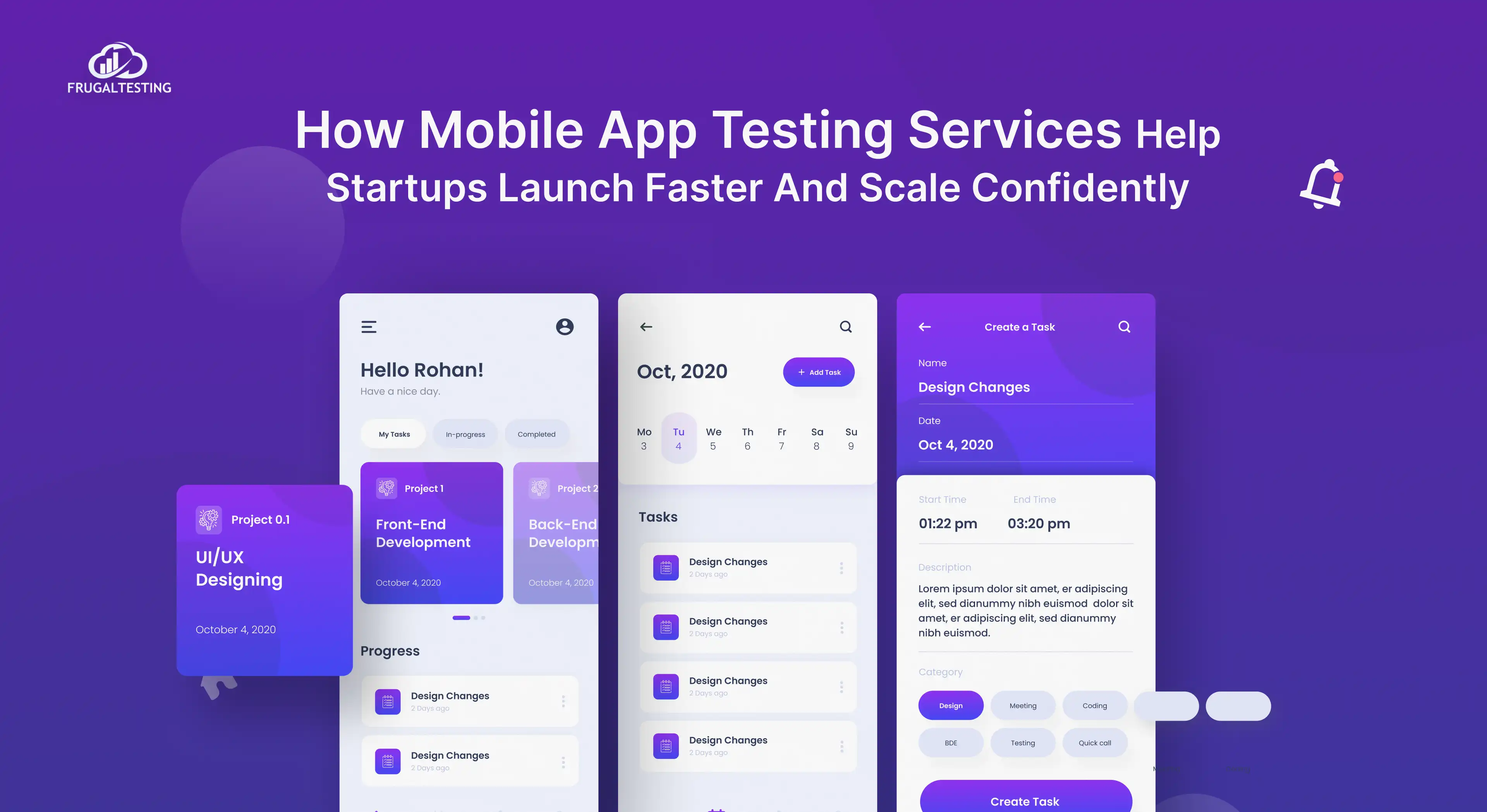Manual testing services in Los Angeles, California, USA, play a crucial role in helping local businesses maintain high standards of software quality. Despite the growing popularity of automation, manual methods remain vital for identifying usability issues, validating complex user interactions, and conducting exploratory testing that automated scripts may overlook.
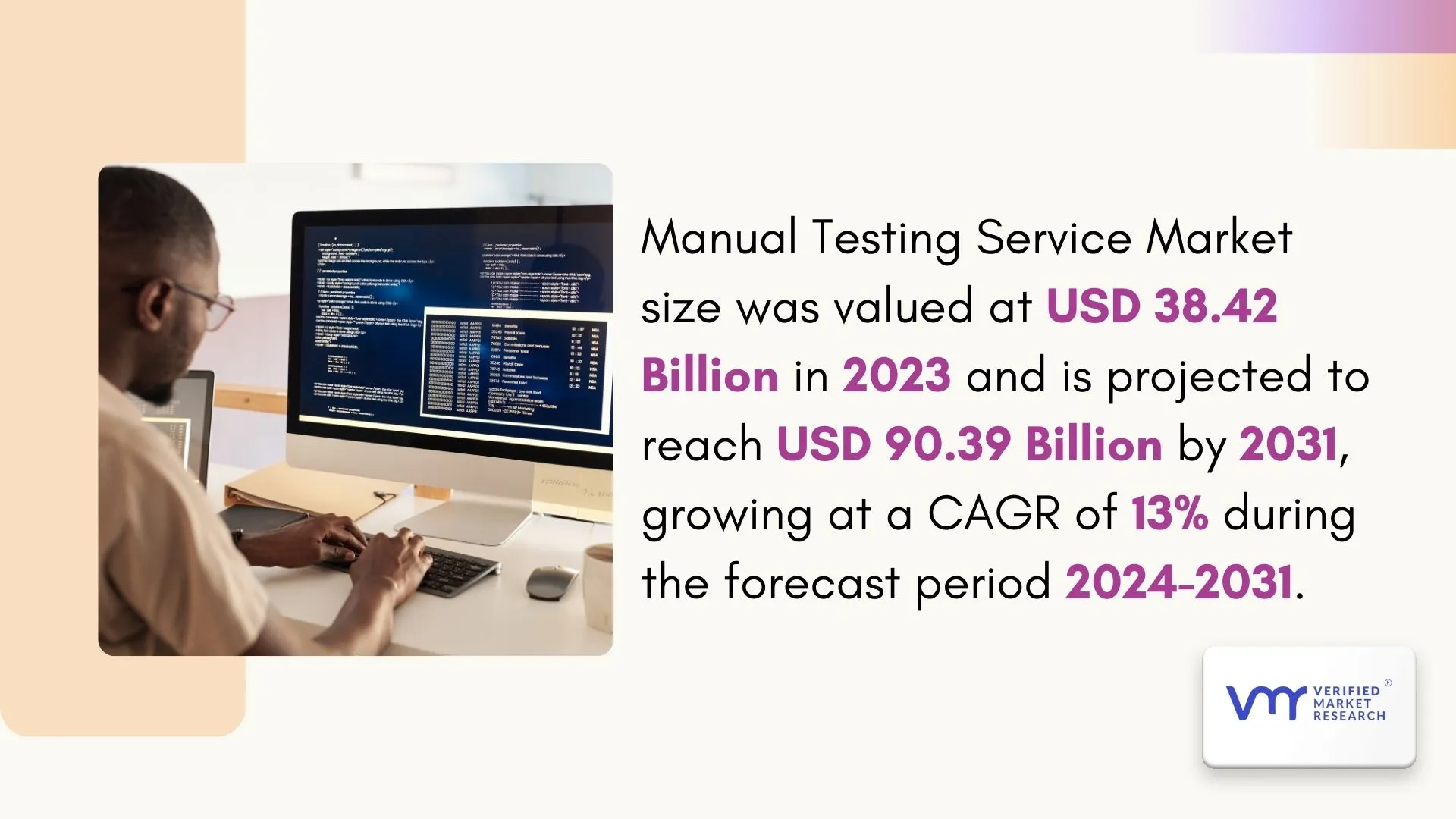
This guide outlines the importance of manual testing, how to select the right software testing companies, and lists the top manual software testing services trusted by Los Angeles-based companies.
💡 What’s Next? Keep reading to discover:
🚀 Why manual testing is still critical for Los Angeles-based businesses
🚀 Key benefits and common use cases of manual testing
🚀 How to strike the right balance between manual and automated testing
🚀 Top manual testing service providers in Los Angeles
🚀 Tips for choosing the right QA partner to scale your software quality
Introduction to Manual Testing Services in Los Angeles
Manual testing continues to be a core part of quality assurance when evaluating whether a software application performs as expected before it is released. It involves a step-by-step evaluation of software, without using automation tools, to detect issues related to:
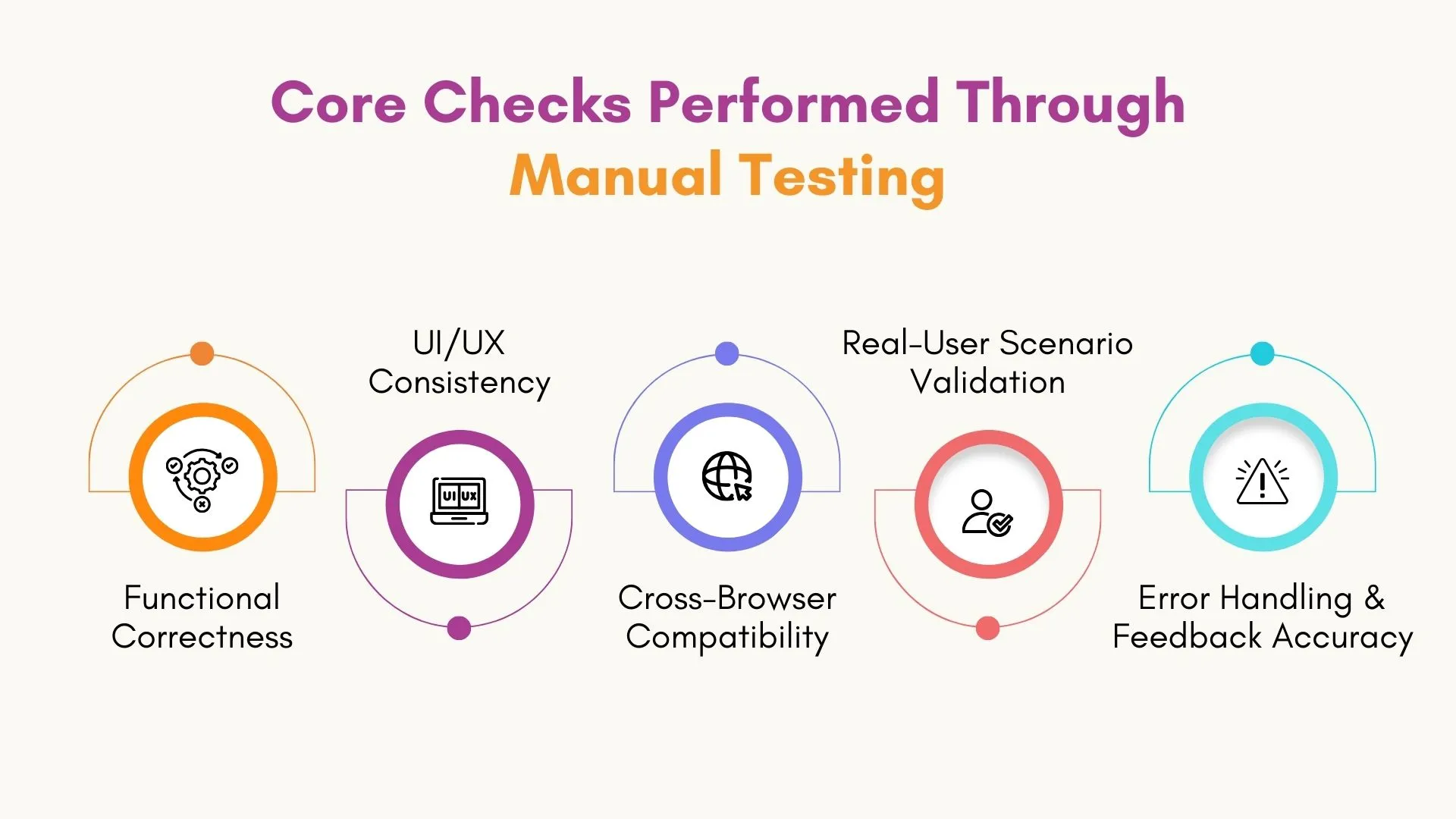
Organizations in and around Los Angeles often turn to manual testing services to ensure their applications meet both technical and user standards. This approach is particularly effective for industries like e-commerce, healthcare, digital platforms, and media, where software must be reliable, user-friendly, and fully functional across different environments.

This process helps QA experts understand how users interact with the application in real scenarios. Unlike automated testing, manual testing can capture subtle interface or usability issues that scripts may overlook, making it a practical choice during the early phases of development or when the product design is still evolving.
Core phases of manual testing:
- Requirement Analysis – Tools: JIRA, Confluence
- Test Planning & Case Design – Tools: TestLink, TestRail
- Test Execution – Tool: Zephyr Scale
- Bug Reporting – Tools: Bugzilla, MantisBT
- Test Closure – Tools: Excel, Google Sheets
A skilled software testing company in Los Angeles typically integrates manual testing within a broader QA framework to reduce defects, ensure product quality, and improve overall user experience before deployment.
Key Benefits of Manual Testing for Los Angeles Companies
Manual testing delivers targeted value across different business sizes and sectors by ensuring applications behave as intended in real usage conditions. This approach is particularly effective in projects where user experience, business logic, and cross-platform compatibility are critical.
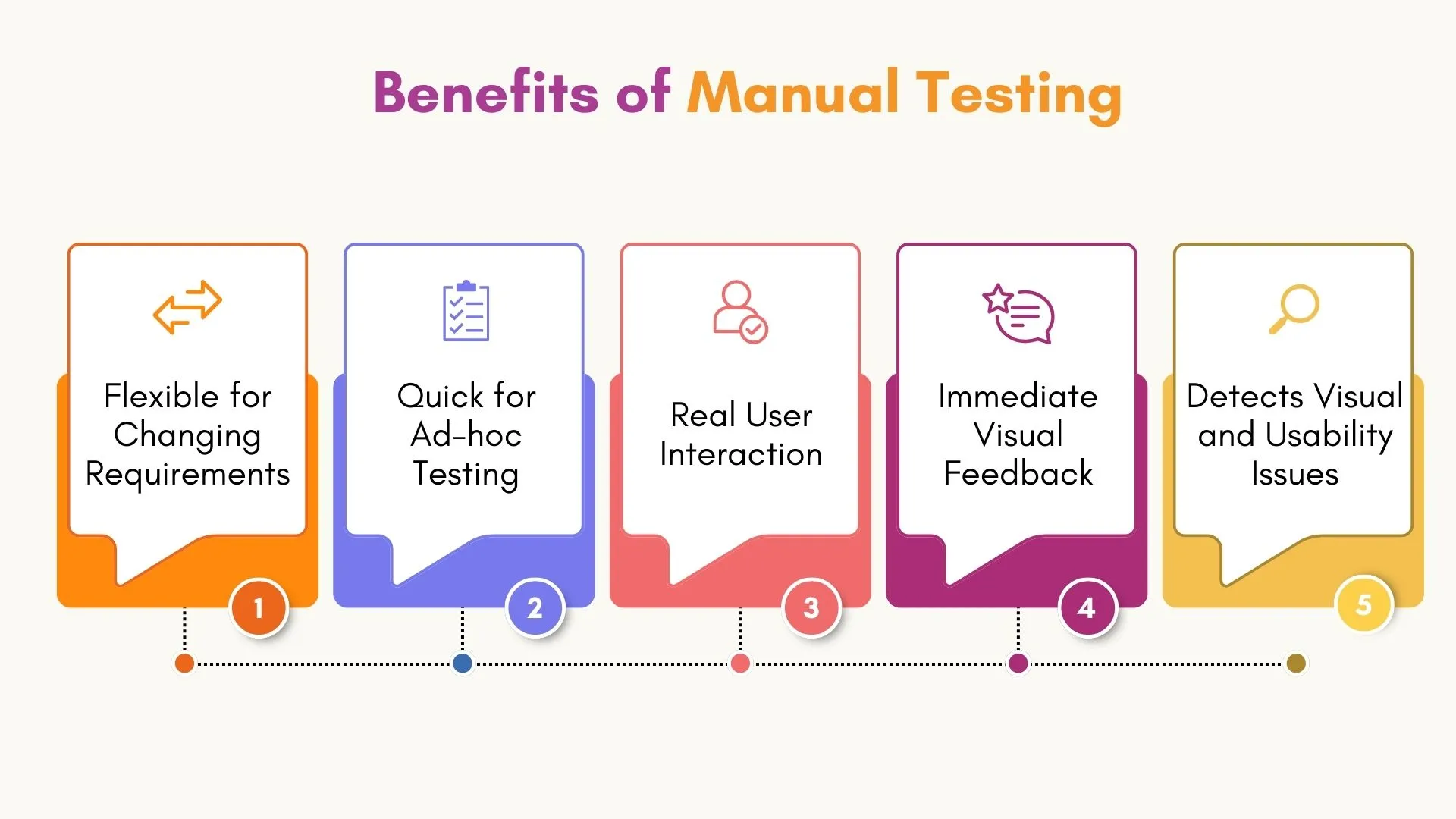
- Validation of Business-Critical Workflows
Manual testing helps verify the most important use cases, checkout processes, data entry forms, scheduling modules, and more, ensuring they operate reliably under varied user actions. - Broader Test Coverage for Complex Interfaces
Human testers can assess conditions and behaviors that automated tools may skip, such as dynamic UI changes, dropdown logic, or accessibility issues, resulting in stronger overall code coverage. - Lower Upfront Cost and Higher ROI
Especially beneficial for startups and mid-sized firms, manual testing offers a strong return on investment (ROI) by eliminating the need for costly automation tools in early development. - Faster Alignment with Ongoing Changes
In environments where UI/UX elements evolve frequently, manual testing allows QA teams to begin validation immediately, without script maintenance or tool configuration delays. - Improved Software Quality Assurance
A Los Angeles-based team that understands local business dynamics and blends them with global testing standards offers a unique edge, especially in delivering tailored, high-quality services that maximize your rate of return on investment.
Manual vs. Automated Testing: Striking the Right Balance
When evaluating software testing strategies, businesses often compare manual testing services with automation to align with their product lifecycle, release timelines, and user expectations. Here’s a structured comparison to support informed decision-making in quality assurance services:
Choosing a Manual Testing Partner in Los Angeles
Selecting the right manual testing partner in Los Angeles is a strategic move that directly impacts the reliability, user experience, and long-term success of your software. A reliable partner should not only help uncover defects but also support the continuous improvement of your digital product.
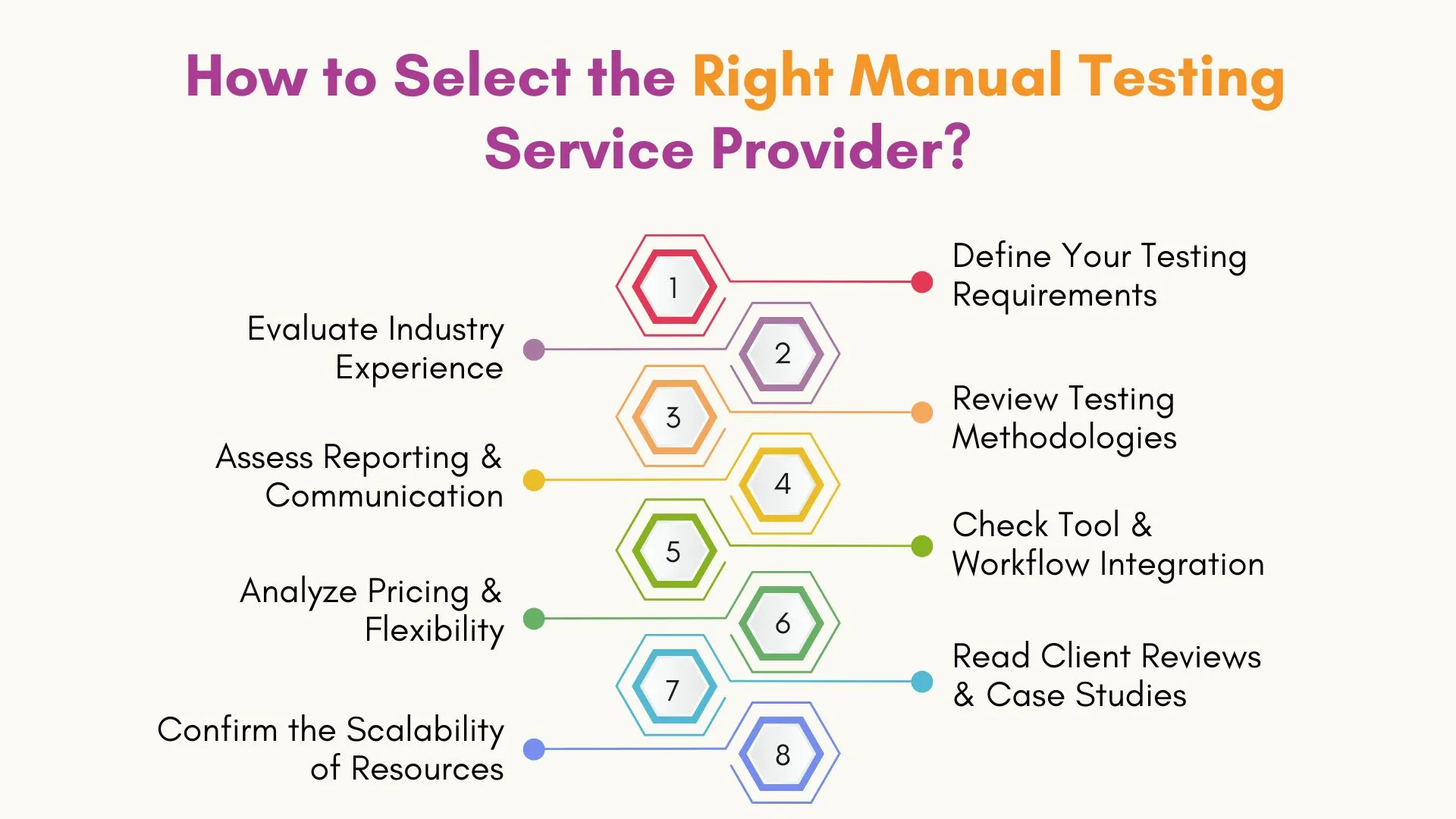
Here are some of the essential aspects to consider:
- Industry Specific Knowledge
Choose a provider with proven experience in your sector, such as e-commerce, healthcare, or digital media. Familiarity with domain-specific requirements leads to more accurate and relevant test coverage. - Structured Quality Assurance Approach
Assess the partner’s quality assurance software framework. This includes their manual testing processes, defect reporting methods, use of checklists, and attention to compliance or usability guidelines. - Team Scalability and Availability
Assess whether their team can scale with your project, adjusting resources during sprints or maintenance cycles, and even integrating tools like load testing software for performance-critical systems. - Clear Communication and Reporting
Transparent collaboration is key. Partners should offer regular updates, clear defect logs, and support faster resolutions, ultimately boosting productivity and contributing to the best return on investment. - Local Understanding with Professional Standards
A Los Angeles-based testing company that understands regional workflows and business culture while maintaining global testing standards can deliver tailored and efficient services.
Top Manual Testing Services in Los Angeles
Los Angeles is home to a wide range of reliable manual testing providers. These companies deliver high-quality software QA services tailored to industry-specific requirements such as performance validation, user experience, and regulatory compliance.
1. Frugal Testing: End-to-End Quality Experts
Frugal Testing stands out in Los Angeles for offering deep, domain-specific manual QA services tailored for complex enterprise systems, mobile apps, and digital platforms.

How Frugal Testing Conducts Manual Testing:
- Domain-Focused Manual Testing: Teams specialize in healthcare, finance, retail, and e-commerce, testing workflows manually to ensure compliance and accuracy.
- Test Case Management Using TestRail: Well-structured manual test cases are planned and tracked using TestRail, ensuring high coverage and traceability.
- UI/UX Reviews with Dev Tools: Manual testers inspect responsiveness, UI glitches, and accessibility issues using Chrome DevTools and Lighthouse audits.
- Risk-Based Regression Testing: Manual regression testing is prioritized based on business risk, using version-controlled test suites.
- Exploratory & Session-Based Testing: QA engineers perform time-boxed exploratory tests to uncover unexpected bugs before they hit production.
Why Choose Frugal Testing?
They offer domain expertise, flexible engagement, and local support, ideal for teams needing reliable manual QA without heavy overhead.
2. Testlio: On-Demand Quality Teams
Testlio brings scalable, on-demand manual testing teams to support dynamic development environments. Their testers integrate seamlessly into your workflows to deliver rapid, reliable results that align with your release cycles.
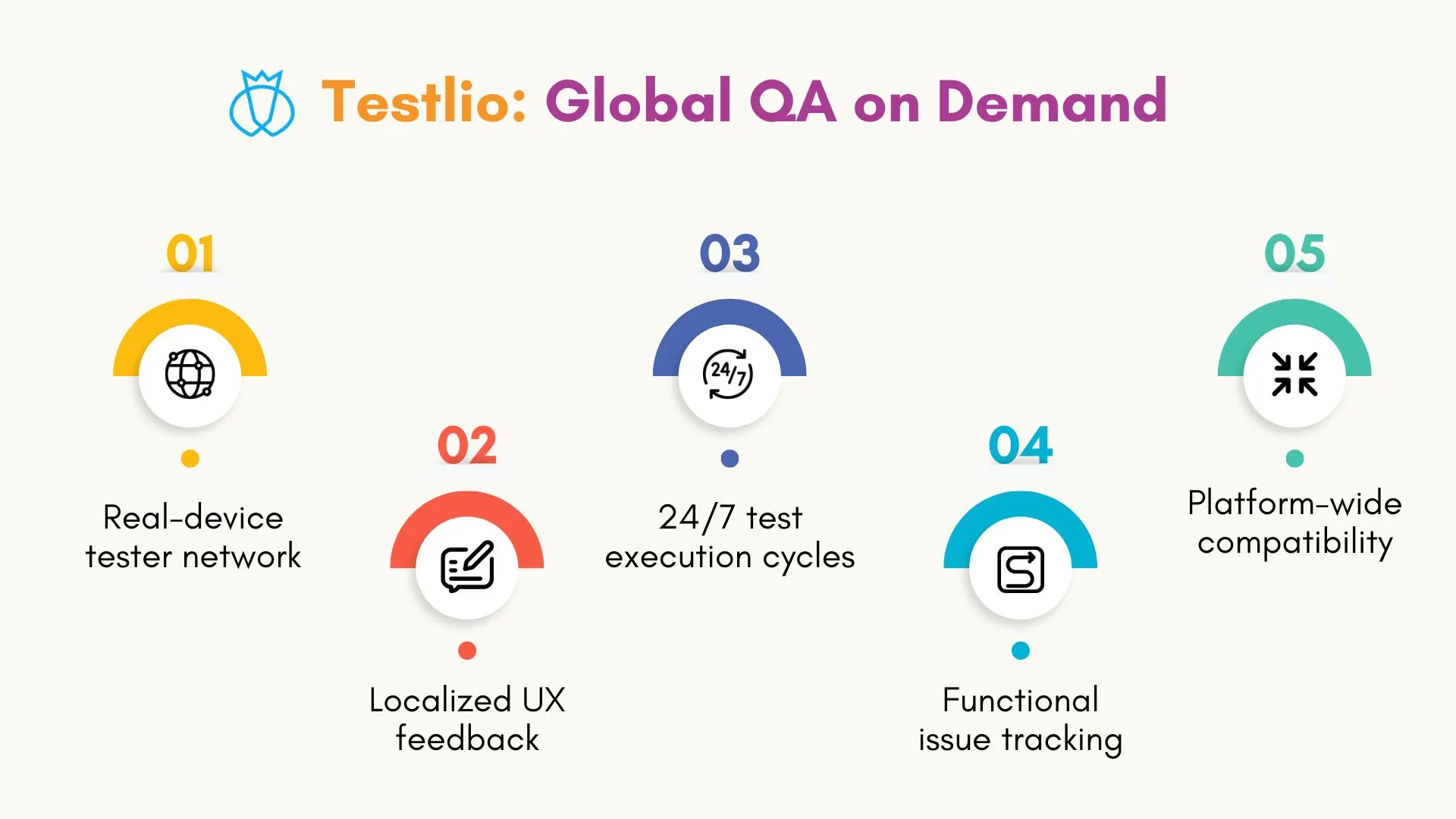
How Testlio Conducts Manual Testing:
- Crowd Testing with Real Devices: Leveraging a vetted global network of testers across 150+ countries using real-world devices to simulate actual user conditions.
- TestRail & Jira Integration: Manual test cases are executed and tracked using TestRail, with real-time defect logging into tools like Jira.
- On-Demand Functional Testing: Testers are available round-the-clock for feature verification during tight sprints or last-minute changes.
- Multi-Locale Testing: Uses native testers to verify UX and language consistency in localized builds.
- Client-Specific Playbooks: Custom testing checklists are created and maintained for every client to ensure consistency and speed.
Why Choose Testlio?
With access to global testers, real-device code coverage tools, and seamless integration into your SDLC tools, Testlio is ideal for high-velocity development teams needing agile, human-led QA.
3. QASource: Scalable Global Quality Services
QASource focuses on delivering enterprise-ready QA solutions with strong documentation, traceability, and scalability in manual testing.
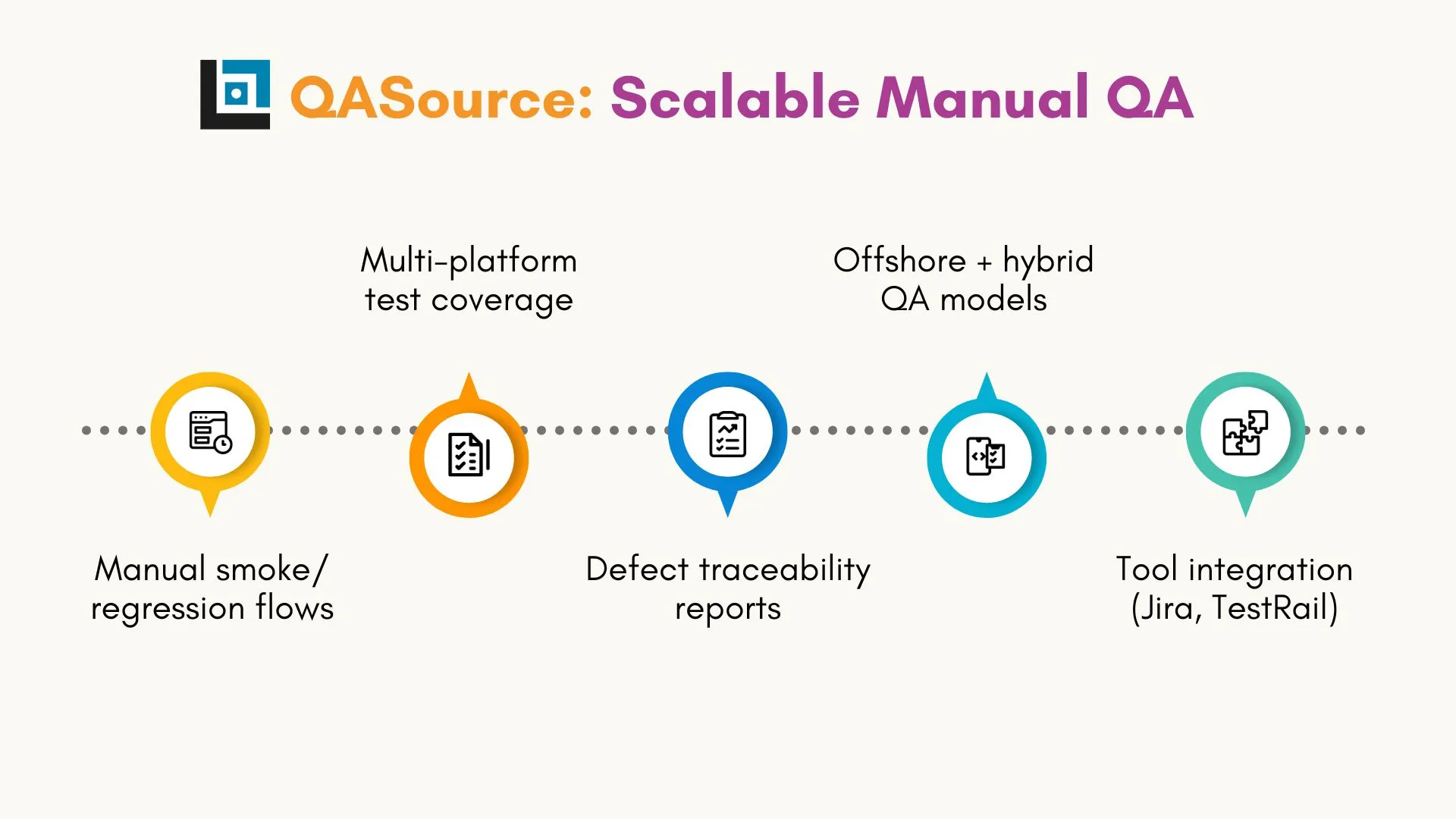
How QASource Conducts Manual Testing:
- Structured Test Planning: Begins with detailed test requirement documentation, aligned with BRDs and wireframes using tools like Confluence and TestLink.
- Layered Testing Approach: Applies multi-level manual testing, including smoke, regression, and exploratory, based on feature risk.
- Cross-Platform Compatibility Testing: Real-device lab and emulators (BrowserStack, Sauce Labs) are used to test on all major browsers, OS, and mobile devices.
- Hybrid Teams: Combines offshore testers and onshore liaisons for 24/7 testing cycles.
- Agile Aligned QA Cycles: Weekly and bi-weekly test case execution with constant feedback to developers in agile standups.
Why Choose QASource?
Their organized processes, enterprise-level documentation, and ability to scale testing up or down make them an excellent partner for growing or large-scale applications.
4. Qualitest: Assurance for Regulated Domains
Qualitest specializes in testing mission-critical systems where accuracy, compliance, and traceability are non-negotiable.
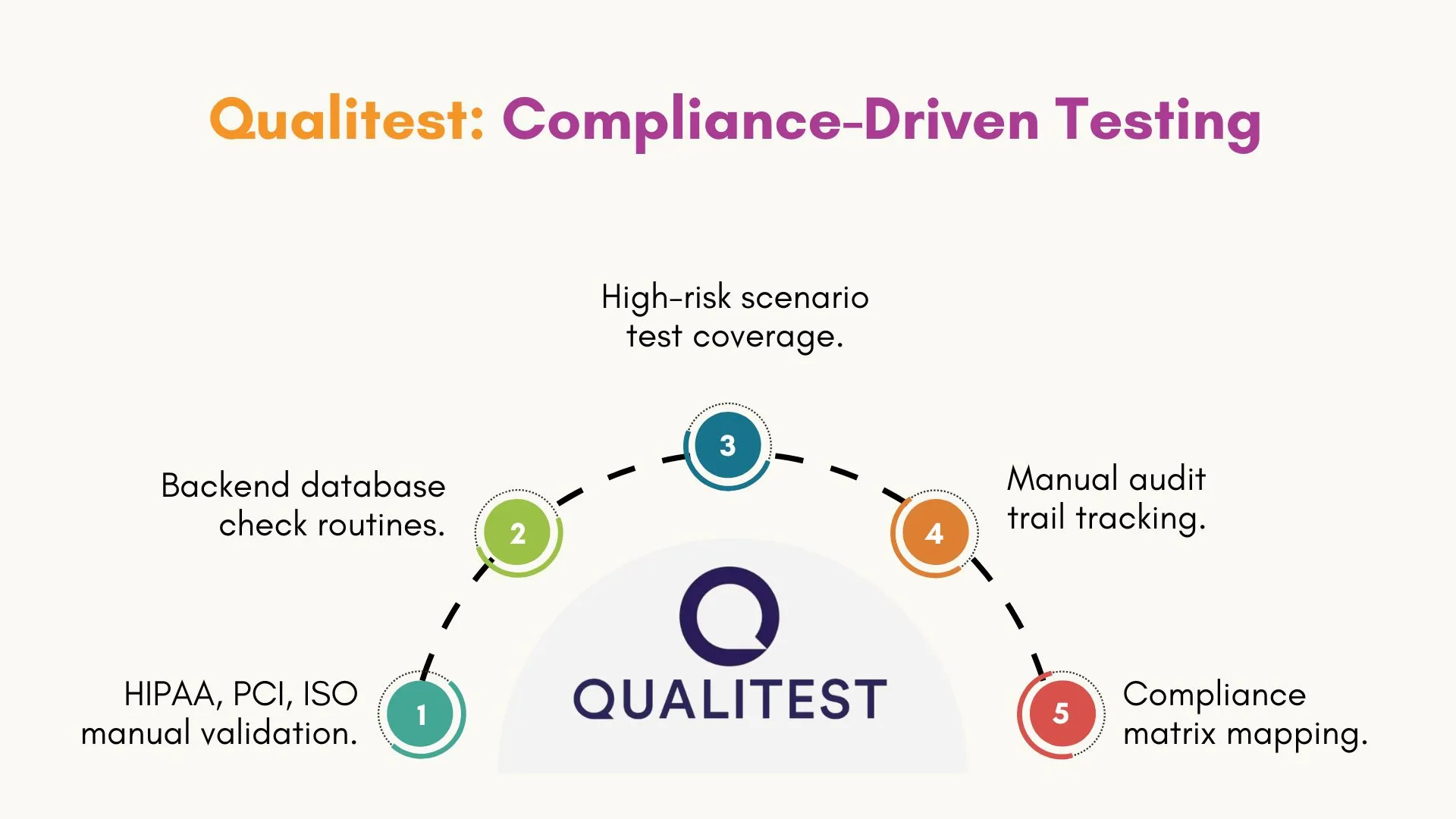
How Qualitest Conducts Manual Testing:
- Domain-Specific Testing Frameworks: Uses pre-built testing templates and scenarios tailored for healthcare (HIPAA), banking (PCI DSS), and more.
- Traceability Matrix Creation: Ensures every test case is traceable to a requirement, using ALM tools like HP ALM and Zephyr.
- Data-Driven Validation: Manual testers validate large datasets using custom Excel scripts and SQL queries, ensuring backend and frontend sync.
- Compliance Checklists: Predefined checklists for compliance audits are used during test execution to reduce legal and operational risk.
- Manual Security & Risk Testing: Human testers simulate real-world user behavior to detect vulnerabilities that automated tools may miss.
Why Choose Qualitest?
For companies in regulated industries, Qualitest offers unmatched expertise in manual validation with traceability, audit readiness, and in-depth industry knowledge.
5. Testrig: Agile Manual Testing Support
Testrig is focused on helping startups and mid-sized teams meet their release goals with dependable, affordable manual QA support.
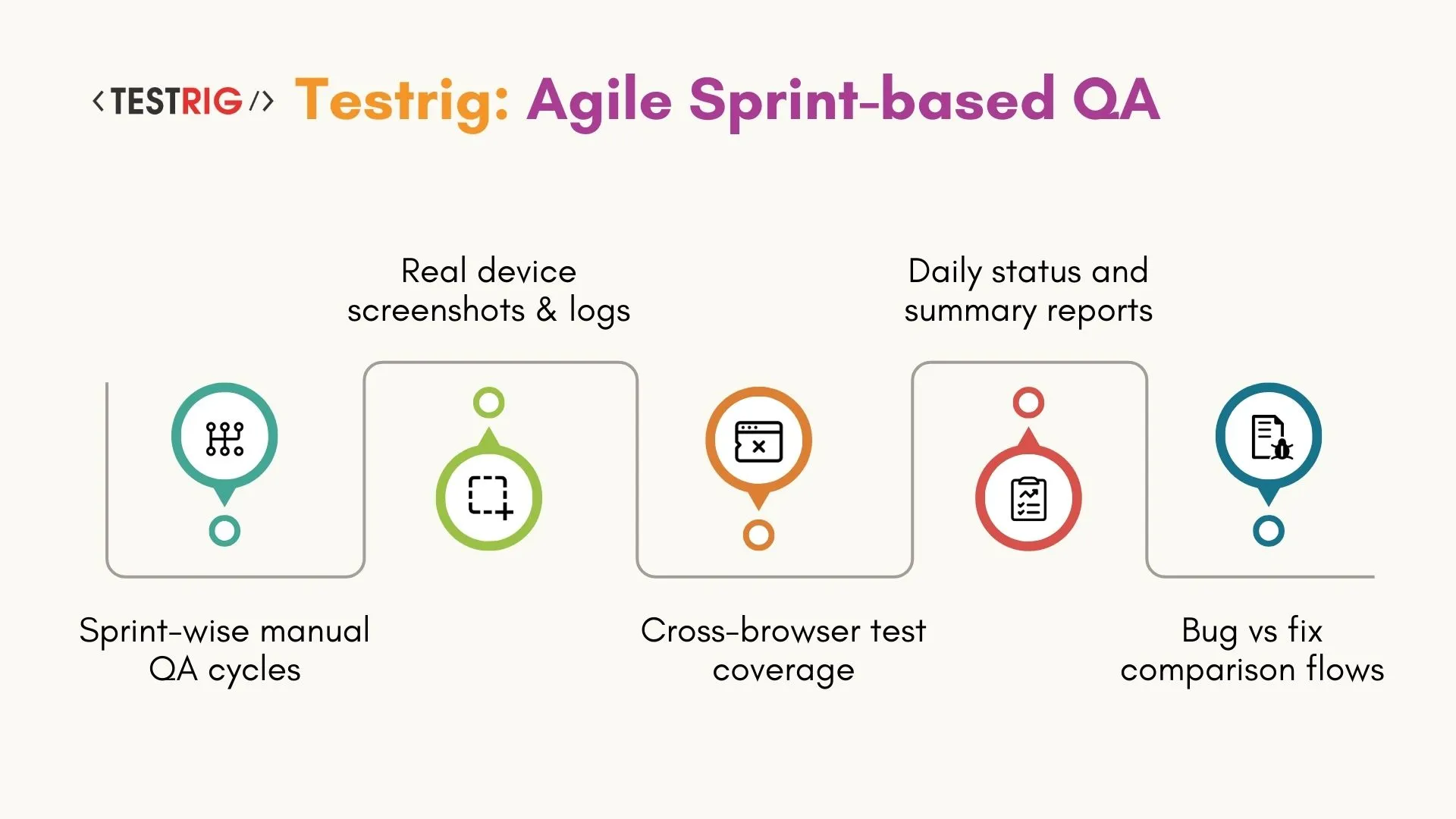
How Testrig Conducts Manual Testing:
- Manual UI Testing with Browser Dev Tools: Testers use browser dev tools to check CSS/UI bugs, responsiveness, and visual inconsistencies.
- Rapid Test Cycle Execution: Test cases are executed manually across agile sprints using tools like TestRail and Xray for JIRA.
- Bug Logging in Realtime: Issues are logged with screenshots, environment data, and step-wise reproduction in tools like Bugzilla and Mantis.
- Device Farm Access: For mobile and tablet testing, Testrig uses cloud-based device farms (like LambdaTest) to ensure coverage.
- Lean Documentation Approach: Rather than heavy reports, short, crisp summaries and screenshots are shared daily for fast decision-making.
Why Choose Testrig?
They bring agility, affordability, and adaptability, perfect for small teams who want a trusted manual testing partner without getting bogged down in process overhead.
Common Manual Testing Use Cases for Local Businesses
Manual testing empowers Los Angeles businesses to enhance software quality assurance testing services through real-user scenarios, identifying software defects, and improving the user experience. Below are three practical case studies demonstrating how focused QA testing services and manual testing tools resolve real-world issues through detailed bug reports, visual feedback, and tailored software solutions.
Case Study 1: Discount Button Fails Across Browsers
A Los Angeles e-commerce platform noticed that customers couldn’t apply promo codes during checkout on Firefox and Safari. This impacted the user experience, resulting in poor digital transformation outcomes and underperforming campaigns.
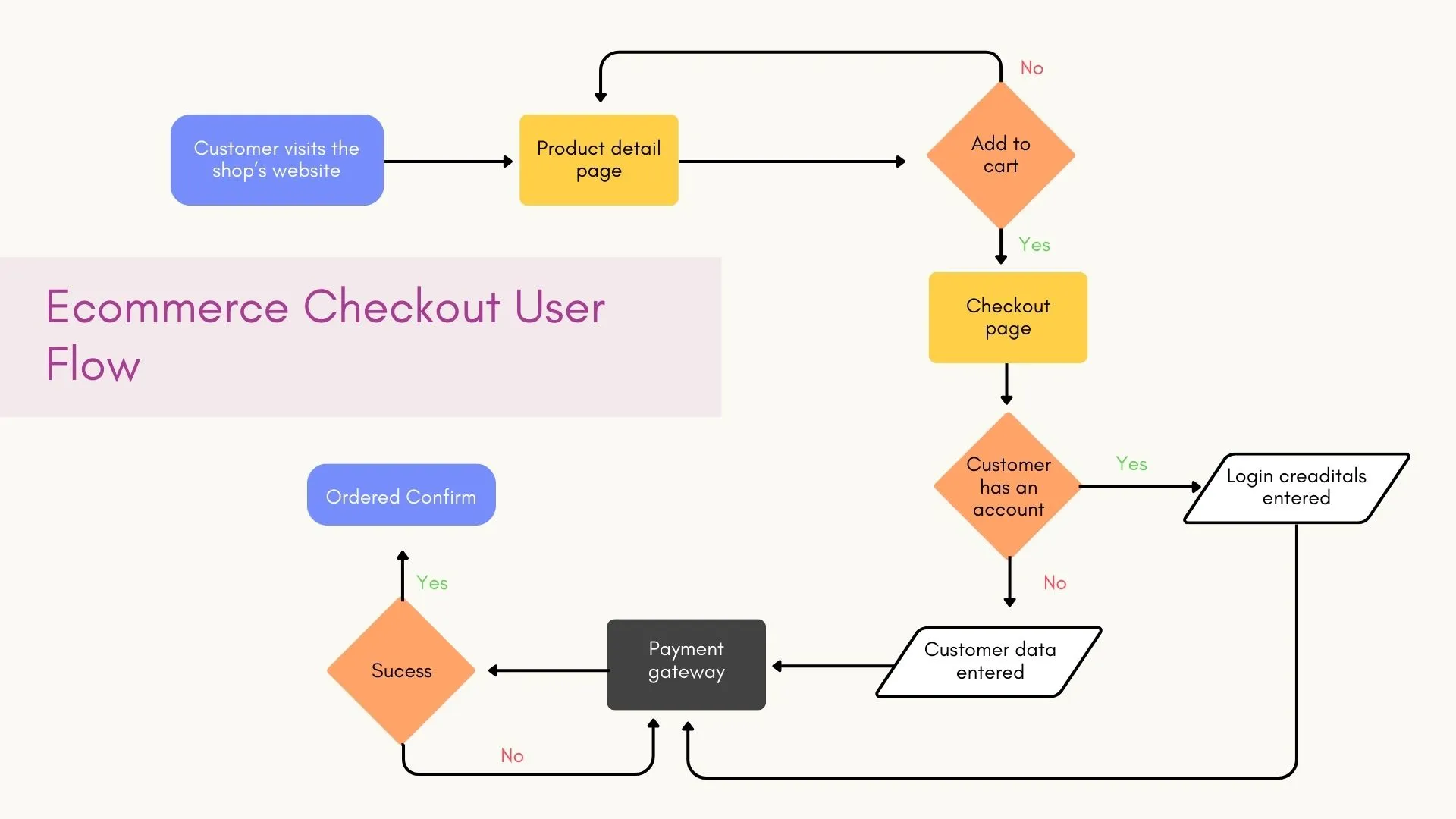
Solution: A dedicated QA team executed cross-browser testing on Chrome, Firefox, and Safari to uncover a JavaScript bug affecting discount functionality, improving the verification process.
Technologies Used: BrowserStack, DevTools, TestRail for test scripts, JIRA for bug tracking.
Approach:
- Replicated live website testing services across browsers.
- Logged console errors and reported software defects.
- Submitted a comprehensive bug report with visuals.
Case Study 2: Ticket Platform Layout Breaks on Mobile
A Los Angeles-based ticketing startup faced UI/UX design issues where buttons overlapped in landscape mode, impacting performance on iOS Safari.
Solution: QA engineers conducted manual testing with real-device testing, revealing layout flaws overlooked by Test Automation.
Technologies Used: LambdaTest, TestRail, Jira with visual feedback.
Approach:
- Ran test scripts on multiple mobile devices.
- Identified performance issues like missing buttons and text overlap.
- Delivered precise user experience feedback for CSS fixes.
Case Study 3: Appointment Booking Errors in Health Portal
A local health clinic’s portal failed to confirm valid appointments, indicating flaws in API testing and backend validations.
Solution: QA testers used manual testing across devices, focusing on security test checks, backend responses, and software defects.
Technologies Used: iOS/Android devices, DevTools, custom matrices, Jira.
Approach:
- Tested various user roles and edge cases.
- Verified validation issues causing security flaws.
- Documented test scripts with reproducible steps.
Common Challenges in Outsourced QA and How to Overcome Them
Outsourcing QA or security testing offers clear benefits like speed and scalability, but also introduces specific risks that need strategic handling. Here are five frequent challenges businesses face, and practical ways to address them:
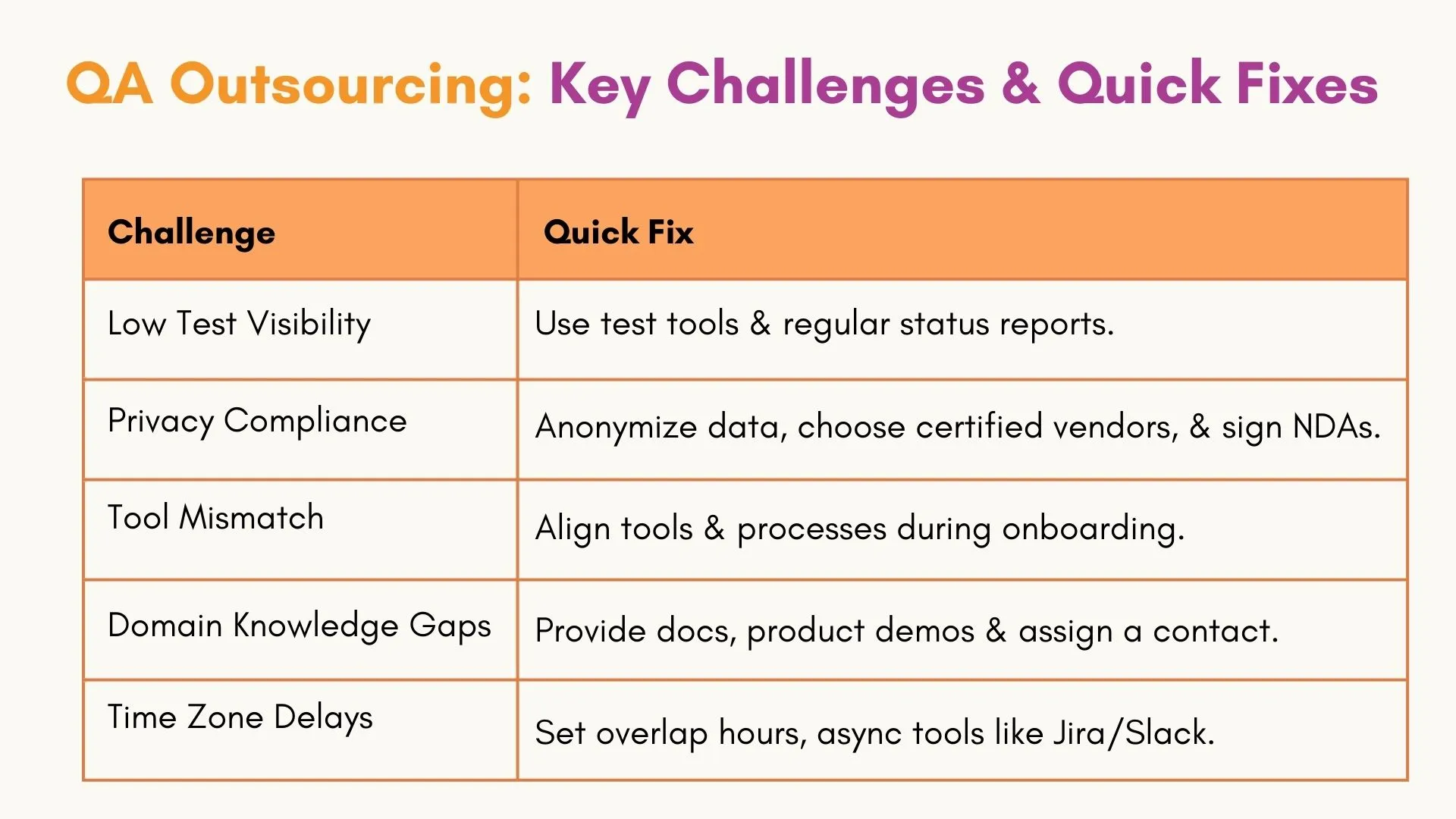
- Lack of Visibility in Testing Execution
Limited transparency into how tests are conducted can reduce trust and allow vulnerabilities to go unnoticed. Using collaborative test management tools and enforcing regular reporting helps improve visibility, especially when addressing complex issues like cross-browser issues. - Compliance and Data Privacy Risks
Sharing sensitive data externally may lead to privacy violations and compliance issues under GDPR, HIPAA, or SOC 2. Choose certified partners, use anonymized data, and sign strict NDAs to safeguard user data. - Tool and Process Incompatibility
Differences in testing tools or workflows can create friction. Defining toolsets during onboarding and ensuring process alignment early avoids disruption and ensures smoother integration. - Limited Understanding of Product or Domain
Without knowledge of your app’s business logic, external testers may miss critical issues. Providing clear documentation, walkthroughs, and a dedicated contact ensures more accurate and complete test coverage. - Delays Caused by Time Zone Differences
Time gaps can slow communication and issue resolution. Set overlapping work hours, use async tools like Jira or Slack, and define escalation paths to maintain project momentum.
Final Thoughts: Scaling Quality with the Right Manual Testing Strategy
A strong manual testing strategy ensures quality assurance throughout the software development lifecycle. Unlike automation, it identifies usability issues, layout inconsistencies, and real-user behaviors. It plays a vital role in functional testing in software testing, helping validate functionality across different browsers and environments.
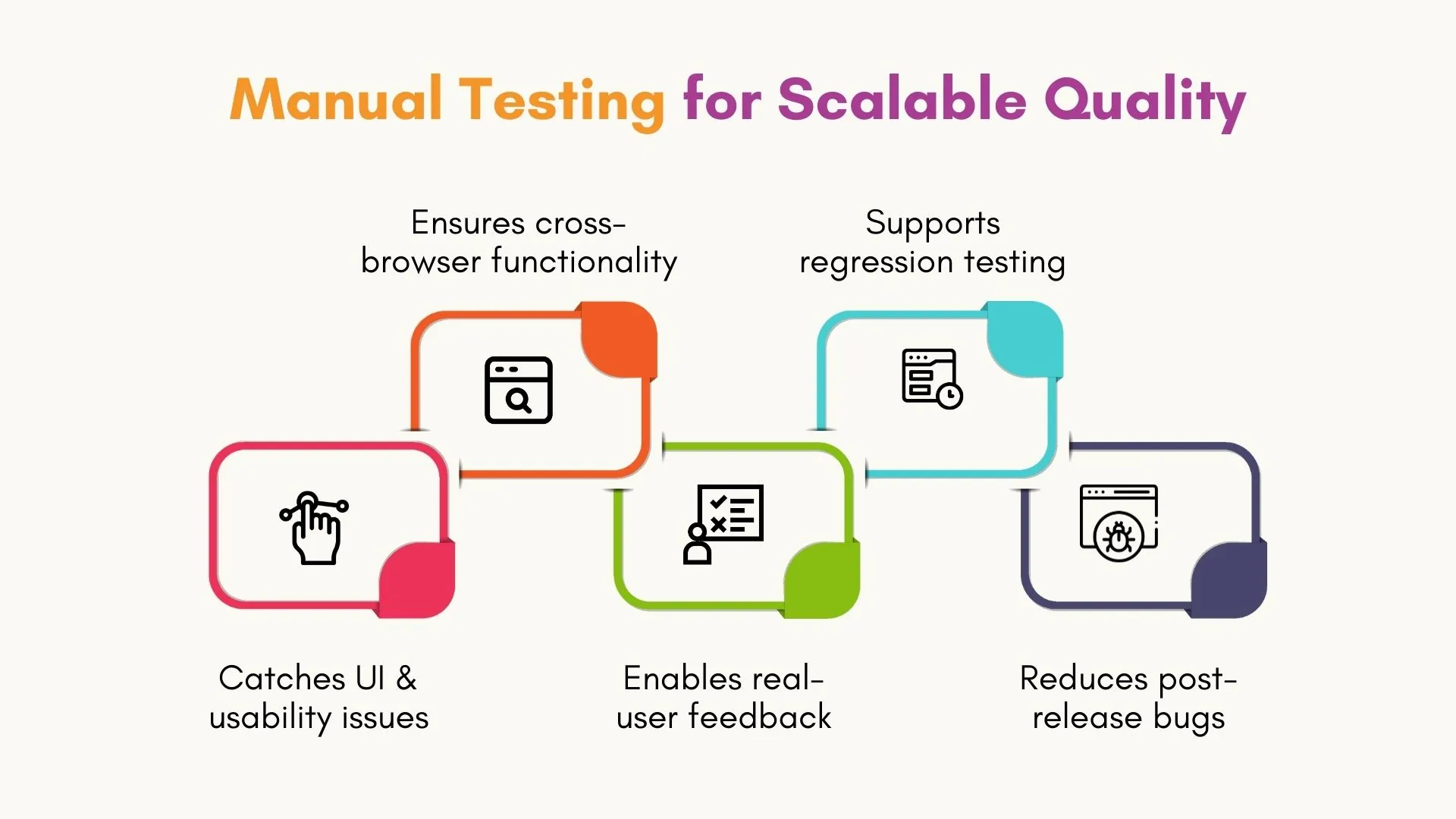
As businesses grow, expert QA testers apply various types of functional testing, such as regression and exploratory testing. Their insights support consistent releases, enhance user satisfaction, and reduce costly errors. When combined with ongoing feedback and proper planning, manual testing contributes to a strong return on investment analysis and long-term brand reliability.
Frugal Testing is a leading SaaS application testing company known for its AI-driven test automation services. Among the services offered by Frugal Testing are cloud-based test automation services that help businesses improve testing efficiency, ensure software reliability, and achieve cost-effective, high-quality product delivery.
People Also Ask
👉How is manual testing done for mobile apps?
Manual testing for mobile apps involves installing the app on real devices or emulators to verify UI, functionality, performance, and cross-platform compatibility.
👉What are the risks of skipping QA?
Skipping proper QA testing can lead to hidden bugs, performance issues, poor user satisfaction, and costly post-release failures in production.
👉What does defect density indicate?
Defect density is a software quality metric showing the number of defects per unit of code, helping assess testing effectiveness and code stability.
👉Can manual testing detect memory leaks or performance issues?
While basic performance symptoms can be observed manually during test execution, detecting memory leaks usually requires dedicated performance testing tools.
👉Can manual testing handle load tests?
Manual testing cannot efficiently simulate load; instead, automated load testing tools like JMeter are used for measuring system behavior under stress.



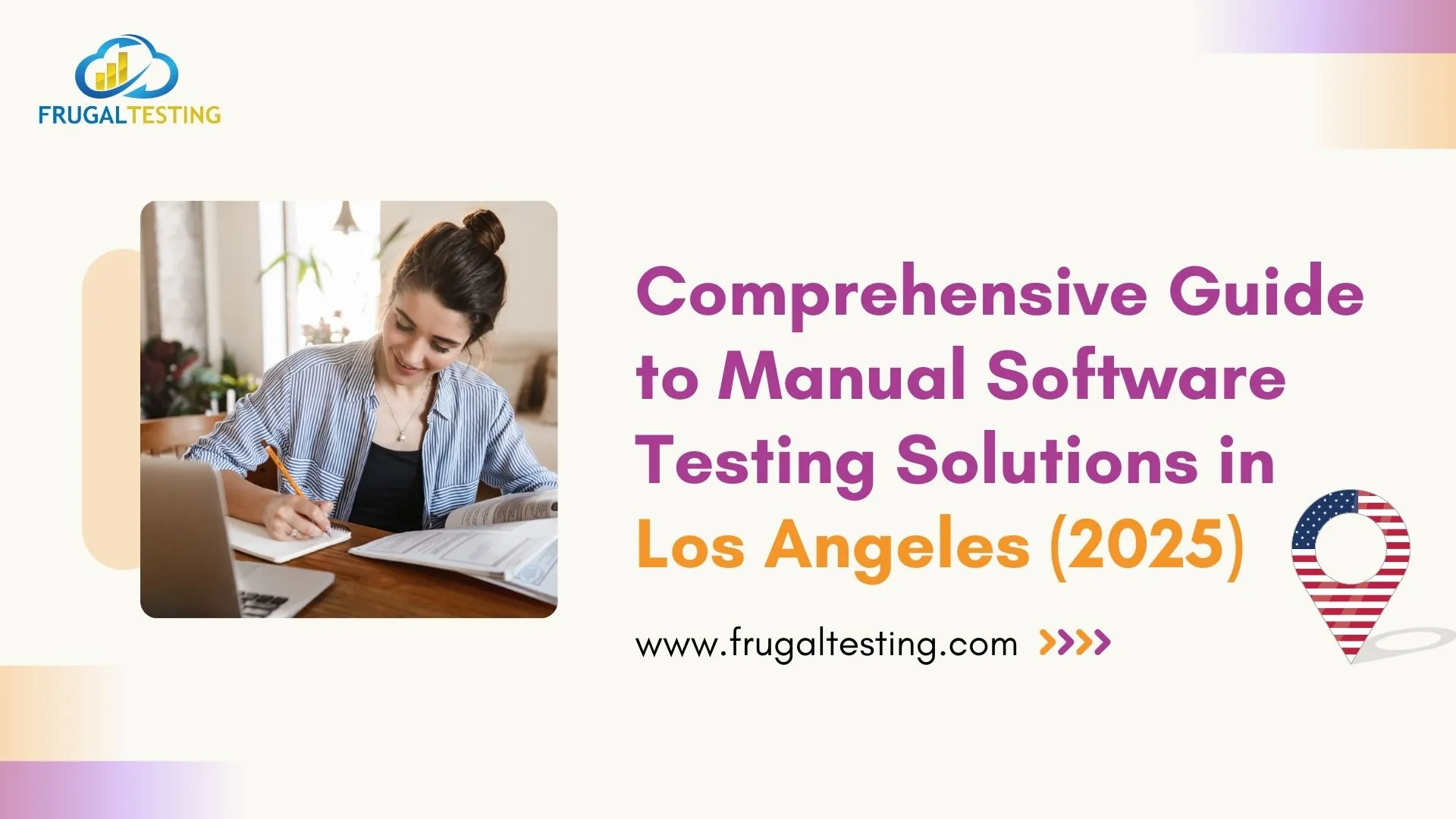
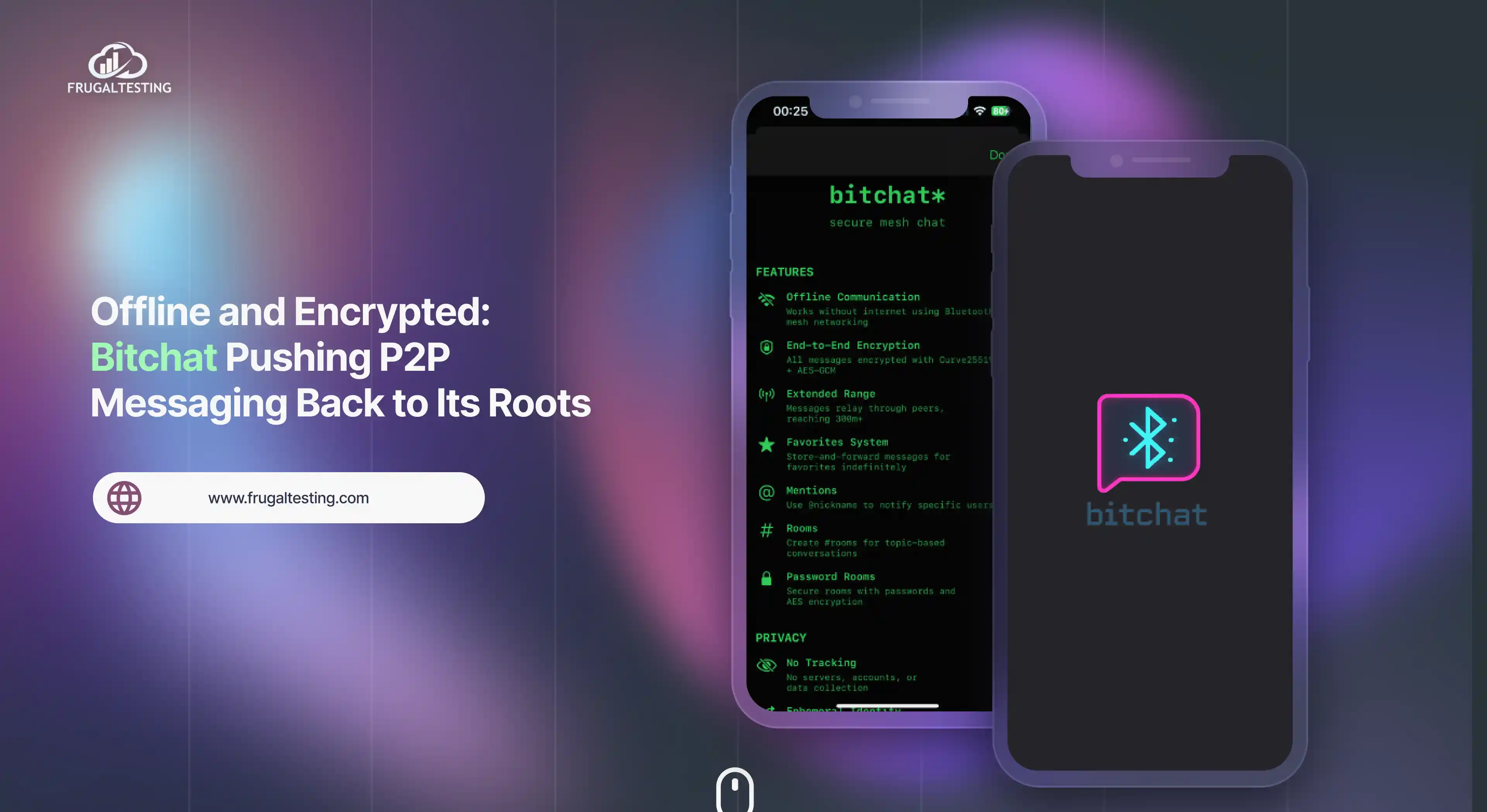
%201.webp)
